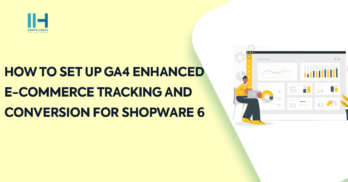Greetings! I'm Aneesh Sreedharan, CEO of 2Hats Logic Solutions. At 2Hats Logic Solutions, we are dedicated to providing technical expertise and resolving your concerns in the world of technology. Our blog page serves as a resource where we share insights and experiences, offering valuable perspectives on your queries.
SEO KPIs (Key Performance Indicators) are critical among eCommerce tools because of the fierce competition and importance of exposure. These are necessary and must be employed in order to obtain better metrics. It is important to understand the significance of KPIs for eCommerce businesses, as they are the cornerstone that will enable your SEO campaign to be profitable.
What are SEO KPIs?
SEO KPIs are used to measure the success of a SEO (Search Engine Optimization) campaign. SEO KPIs provide data on user engagement, such as followers and number of views, website visibility, organic traffic, keyword ranks, and conversion rate. By reviewing the performance reports, you are able to view SEO KPIs for your website.
These metrics tell you how well your SEO content optimization, backlink development, and other SEO strategies have been progressing through the calendar period in terms of your total visitors and income.
From SEO KPIs, you and your team can find where improvement is needed, make correct decisions based on data, and track how you develop your SEO strategies. KPIs are the channel bridging your SEO activities and the company’s objectives and goals. Let’s understand various important SEO KPIs for eCommerce websites.
Important SEO KPIs for eCommerce Websites
1. Organic traffic metrics
Organic visibility refers to how easy it is for your brand to be found when people search online. It’s not just about ranking higher in search results; it’s about how often your brand is visible compared to other brands. When your brand is seen more often, your market share increases.
Tools like Google Search Console allow you to track your brand’s frequency in searches, even when people don’t click on your site. By increasing your visibility, you’ll be able to draw in more potential customers and increase your chances of getting free website traffic. Click-through rates and keyword ranking are helpful in boosting visibility.
2. Conversion Rate Optimization (CRO) Metrics
For an eCommerce business to function properly, there must be an effective marketing plan to use the resources wisely through various channels. Average Order Value (AOV) provides an idea about the average spending and buying pattern of a customer, providing an opportunity to understand the consumer.
The cart abandonment rate refers to the percentage of people who abandon their cart without buying. Knowing this is important for fixing any issues in the buying process and increasing sales.
Conversion rates by device help you identify how well your website is converting visitors into buyers on various devices. Every one of these techniques offers a way to improve the purchasing experience for your customers.
3. User Experience Metrics
There are various methods to measure the user experience on a website. A few of those include bounce rates, which show the percentage of visitors who leave without interacting with the website, which indicates either they are not interested in the content or something went wrong.
The second one, Average Session Duration, indicates how long a visitor stays on your page. Thirdly, page per session indicates how many pages people look at during one visit. The last one is mobile responsiveness, which means making the website work well on phones and tablets because a lot of people use phones to browse the internet. These methods not only keep the user happy but also help the site rank better on search engines.
4. Site Performance Metrics
A user’s experience on a website depends on the performance of the website. So, site performance metrics are essential. A few of the important elements that must be considered for better site performance include page load speed. The faster the web page loads, the better the website’s Google ranking will be.
Secondly, the site speed index indicates the performance of the whole website, including speed and responsiveness. Thirdly, Time to First Byte is to measure how quickly the server responds when someone visits your site. The last one is server response time, which refers to how quickly your web server responds to a request from the user. These site performance metrics help to maintain user experience metrics.
5. Backlink Profile Metrics
Backlinks are the number of links coming from other websites to yours (Google examines these links as an important factor for trustworthiness). Backlinks are individual websites sending visitors to your own. The basis of quality link building is to place your links on multiple websites, specifically authoritative ones, which is critical for being at the top of search results.
The authority score is an indication that shows you how strong your linked websites are compared to your competitors’. It thereby shows you that you’re performing well in your niche. Link quality and relevance speak here not only about a bulk of backlinks but also about backlinks, which must make sense and should come from reputable sources. Acquiring high-quality content helps your site be at the top of the list next time people search.
6. Content performance metrics
Landing Pages: these two or three pages are visited by most of your visitors when they arrive. Getting to know which pages are visited the most will assist you in knowing how your audience feels about the topics and format they like. Time on Page measures the time people spend looking at a certain page on the site and consequently informs how interesting or useful people find the page.
The metric of dwell time calculates how long visitors on the page stay after they have clicked on the result of a search. The longer they are here on your site, the more likely it is that your content ranks higher and matters to them. Content engagement metrics such as likes, shares, and comments on social media platforms display the extent or how much people are enthusiasts of and taking part in your campaigns. Getting lots of engagement can help your content reach more people, making it stay longer with their audience, which is considered a win-win.
7. Mobile-Focused Metrics
Mobile traffic share is the proportion of your website visitors that are coming from mobile devices. As more people prefer to connect to the internet using their mobile devices, it’s crucial to keep track of the performance of your website’s UX on phones and tablets. The mobile conversion rate, which indicates how many mobile visitors make a purchase on your site, is one of the performance indicators. This allows you to determine if your website navigates easily on mobile devices and if people can find the things they look for.
Mobile usability means tweaking your website so that it looks cool and works flawlessly on mobile phones and tablets. It involves “making things”easy”—simple tabs, clear menus, everything properly sized. Website load speed for mobile is determined by how fast your website loads on a tablet or phone. Making sure that your website loads as quickly as possible on mobile devices is important since slow-loading websites might drive visitors away.
8. Local SEO Metrics
Local organic traffic refers to getting higher rankings in search engine results and increasing the number of visitors from your local region to your website. You can make your business visible to more customers who are looking for things nearby by adding your location to your website. Local keyword rankings correspond to ranking higher in search results whenever people in your area search for things you sell. This helps more people from the area who are using the internet to find you. Websites that authenticate your business are known as local citations, such as directories and review sites. This can attract lots of these mentions, which can increase your visibility in local searches.
Google My Business Metrics are about helping your business be easily found when people search for places or when they use Google Maps. It has been proven that having a profile on Google My Business makes a local business more visible to local people and customers.
9. eCommerce-Specific Metrics
A product page conversion rate reflects the number of people who buy something after seeing the product on your webpage. It assists you in image optimization, descriptions, and products you are likely to buy. Cart-to-Detail Rate stands for how many people place items in their cart versus how many only look at the details. It helps you see where people are struggling when they are trying to pay for the product. Customer feedback metrics might be a customer review or comments written about your product on an online shopping platform. Good reviews may give people a reason to buy, so it may be wise to pay attention to what consumers think. Average Revenue per User (ARPU) is a measurement indicating the amount that a customer brings in on average. It shows you how you can be profitable from them in the future.
10. Competitive Analysis Metrics
Competitor keyword rankings are comparable to finding out how your competitor ranks on various keywords on search engines. Thus, you will get an idea of such keywords, which are important, as well as know how to compete against them. Analyzing a competitor’s backlink profile means observing who is linking to your competitors’ websites. This can be useful in the process of finding spots where there is a possibility for link exchange that can enhance your site’s ranking. This is to note the content performance of competitors so you can see how your content stacks against theirs. This can help you find out trendy and well-liked topics and what you should be doing to compete with others. Through market share analysis, you are going to explore the market where your competitors get and where you get. This will definitely make it easier for you to choose the right path on how to get more customers and expand your business.
Conclusion
To monitor the changing consumer shopping behaviours and trending subjects to maintain a continuity in your online business. Careful analysis of SEO KPIs helps e-commerce startups sail in the sea of digital business confidently and gradually enhance visitors, engagement and conversion. For expert advice you can contant eCommerce services to improve the visibility of the website. While the digital competitive arena is overburdened, search engine optimization KPIs become the centre of eCommerce success. For any further support, hire a developer.
FAQ
Methods to improve a website's organic visibility?
To drive organic traffic, make sure to centre your current content around relevant keywords, gain backlinks from reputable websites, and make sure your site is mobile-friendly. This way, it will look well on phones and tablets.
What to do if the website conversion rate is low?
Something to think about here is the low conversion rate, so consider improving your product pages with high quality images, and persuasive content. You might also think of the streamlined check-out process to reduce less cart abandonment. Another way is to offer discounts or free shipping to encourage sales.
How to measure the performance of a website?
One way is through content performance measurements that we gain by reviewing page views, time on page and the engagement metrics like likes, comments, and shares on social media platforms.
Why is mobile usability important?
Mobile usability acts as important because a large chunk of online traffic emanates from mobile based devices. If you remember to keep your website user-friendly by giving it an easy navigation and fast loading speed on mobile devices then, you will be able to enhance user experience that consequently will drive a lot of conversions.
Table of contents

Related Articles









